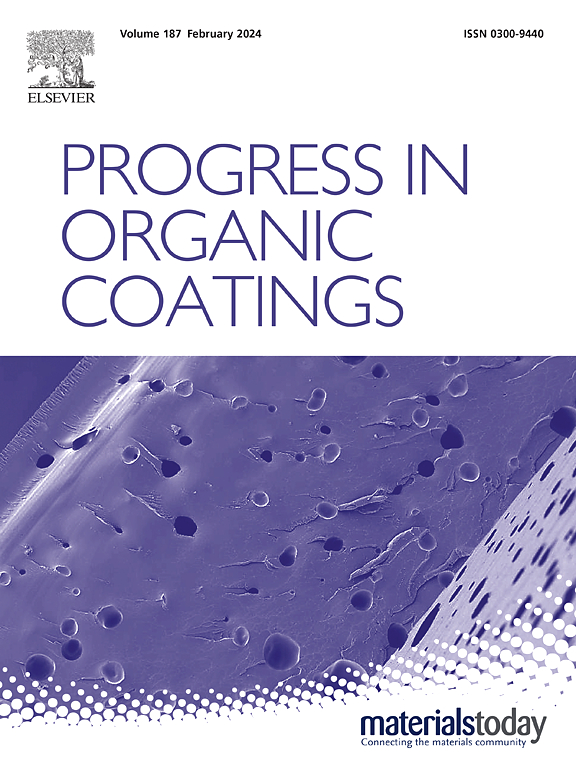Lysine-based curing agents: A green synthesis strategy for photoluminescent epoxy resins with novel lactam side groups
IF 7.3
2区 材料科学
Q1 CHEMISTRY, APPLIED
引用次数: 0
Abstract
The performance of polymer materials is largely determined by the structures of their side groups, such as alkyl, aromatic, or ester ring groups. Therefore, the development of polymers with novel side groups is of great significance in the field of new functional polymers. To date, polymers containing lactam ring side groups have not been reported. In this study, a bio-based amino-caprolactam epoxy curing agent was successfully used to prepare polyether amine epoxy resin with lactam side groups. The results showed that the addition of the amino-caprolactam curing agent increased the glass transition temperature, char residue, tensile strength, and hardness of the polyether amine epoxy resins. Additionally, this epoxy resin possessed good photoluminescence properties due to the lactam side groups, and its application in coatings and adhesives was investigated. It was found that this epoxy resin can serve as a protective barrier against harmful short-wavelength ultraviolet and high-energy blue-violet light (380–500 nm). Furthermore, due to the unique lactam bond structures, this polymer is expected to have tremendous potential for preparing new functional materials through the ring-opening reaction of lactam groups, such as polyelectrolyte materials and chain extenders for polyamides and polyesters.
赖氨酸固化剂:具有新型内酰胺侧基的光致发光环氧树脂绿色合成策略
高分子材料的性能在很大程度上取决于其侧基的结构,如烷基、芳香或酯环基。因此,开发具有新型侧基的聚合物在新型功能聚合物领域具有重要意义。迄今为止,含有内酰胺环侧基团的聚合物尚未被报道。本研究成功地利用生物基氨基-己内酰胺环氧固化剂制备了具有内酰胺侧基的聚醚胺环氧树脂。结果表明,氨基-己内酰胺固化剂的加入提高了聚醚胺环氧树脂的玻璃化转变温度、炭渣、拉伸强度和硬度。此外,该环氧树脂由于含有内酰胺基团而具有良好的光致发光性能,并对其在涂料和粘合剂中的应用进行了研究。结果表明,该环氧树脂可作为有害短波紫外线和高能蓝紫光(380-500 nm)的防护屏障。此外,由于其独特的内酰胺键结构,该聚合物有望通过内酰胺基团的开环反应制备新的功能材料,如聚酰胺和聚酯的聚电解质材料和扩链剂。
本文章由计算机程序翻译,如有差异,请以英文原文为准。
求助全文
约1分钟内获得全文
求助全文
来源期刊

Progress in Organic Coatings
工程技术-材料科学:膜
CiteScore
11.40
自引率
15.20%
发文量
577
审稿时长
48 days
期刊介绍:
The aim of this international journal is to analyse and publicise the progress and current state of knowledge in the field of organic coatings and related materials. The Editors and the Editorial Board members will solicit both review and research papers from academic and industrial scientists who are actively engaged in research and development or, in the case of review papers, have extensive experience in the subject to be reviewed. Unsolicited manuscripts will be accepted if they meet the journal''s requirements. The journal publishes papers dealing with such subjects as:
• Chemical, physical and technological properties of organic coatings and related materials
• Problems and methods of preparation, manufacture and application of these materials
• Performance, testing and analysis.
 求助内容:
求助内容: 应助结果提醒方式:
应助结果提醒方式:


